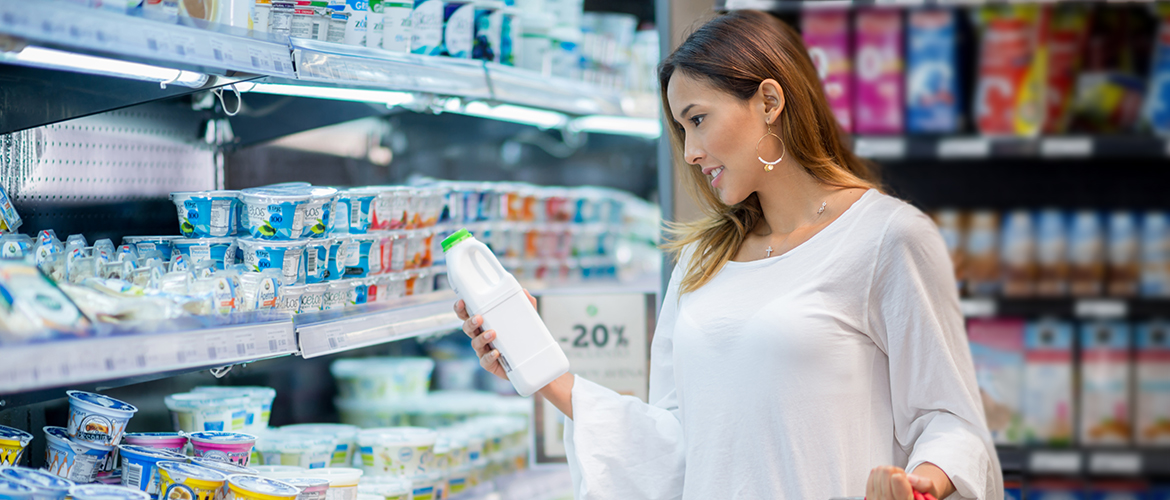Have you ever wondered where your milk comes from and how it gets from the farm to your table? Read on for a quick glimpse into the journey of milk from farm to fridge – how it’s produced, its freshness and simplicity, and the story that connects your glass of milk with the local dairy farm families who produce it.
On the Farm
Cows are milked two to three times each day with specialized milking equipment that milks the cows and pumps that milk directly from the cow to a refrigerated storage tank, where it is quickly cooled to preserve freshness and safety. It is important to note that milk never touches human hands – just one of the many food safety measures in place.
Did you know that 95% of dairy farms are family-owned and -operated? Animal welfare is a top priority for dairy farm families because healthy cows produce high-quality milk (plus, taking great care of the cows is the right thing to do!). For that reason, dairy cows receive special diets designed by cow nutritionists, shelter and water, and regular veterinary care, including periodic check-ups, preventative vaccinations and prompt treatment of illness.
It is important to note that dairy cows are not routinely treated with antibiotics. Just as you’d only treat a sick child with antibiotics under the supervision of a doctor, dairy farmers care for their cows in a similar manner. When an illness requires that a cow be treated, antibiotics are administered under veterinarian care, the cow is milked separately from the rest of the milking herd and her milk does not enter the food supply.
At the Processing Plant
Fresh milk is driven from the dairy farm to a local dairy processing plant in an insulated, sealed tanker truck. You’ve probably seen one on the highway – it’s similar to a giant thermos on wheels.
Prior to leaving the farm, and upon arrival at the processing plant, every tanker load of milk is tested for antibiotics. In the extremely rare event that milk tests positive, it is disposed of immediately and never reaches the public.
Once the milk is unloaded from the truck, it is pasteurized and packaged into bottles or cartons. Pasteurization is a process of heating raw milk at a high enough temperature for a sufficient length of time to destroy bacteria that can cause serious illnesses. This ensures that the milk is safe to drink.
Distribution companies pick up milk and other dairy products in refrigerated trucks from the local processing plants and deliver them to grocery stores, convenience markets, gas stations, schools and other retail outlets. In most instances, the milk you buy in your grocery store was picked up on the farm less than 2 days (48 hours) prior. Now that’s local!
Regardless of whether your choice in dairy is influenced by taste or nutrition, you too can feel good about milk, cheese and yogurt as part of a balanced diet. In fact, milk is a nutritional bargain at less than 25 cents per 8-ounce glass, on a gallon basis. Especially when you think of all the liquid assets inside! Milk provides great taste plus nine essential nutrients – including protein, carbohydrates and essential vitamins and minerals. It’s how nature does wellness!




